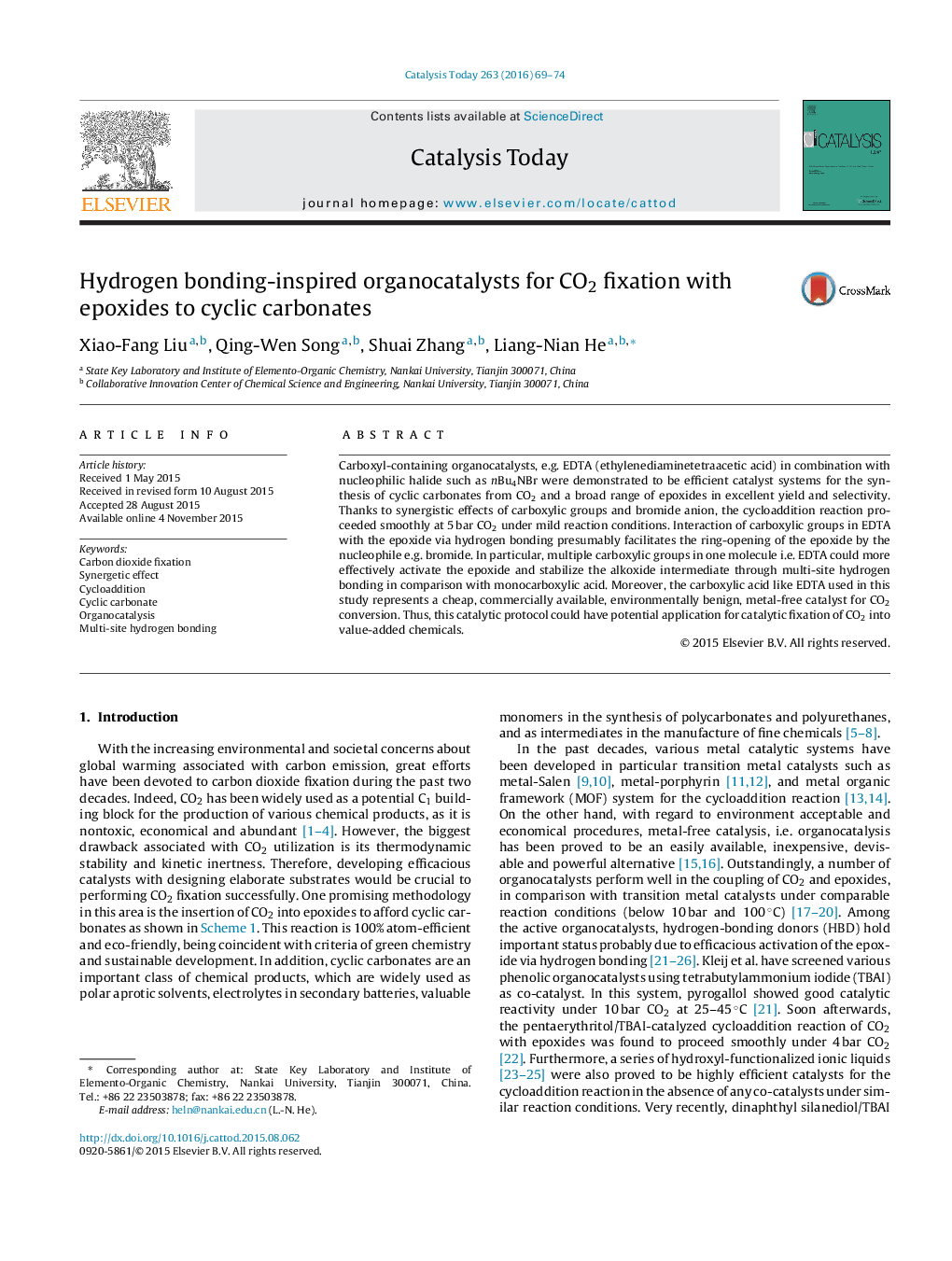| Article ID | Journal | Published Year | Pages | File Type |
|---|---|---|---|---|
| 53404 | Catalysis Today | 2016 | 6 Pages |
•EDTA/TBAB, bifunctional metal-free catalyst is effective for CO2 fixation.•Synergistic effects of COOH and Br− render the reaction performing at 5 bar CO2.•Multi-carboxyl in one molecule is more efficient than monocarboxylic acid.•The intramolecular hydrogen bonding is more active than intermolecular counterpart.
Carboxyl-containing organocatalysts, e.g. EDTA (ethylenediaminetetraacetic acid) in combination with nucleophilic halide such as nBu4NBr were demonstrated to be efficient catalyst systems for the synthesis of cyclic carbonates from CO2 and a broad range of epoxides in excellent yield and selectivity. Thanks to synergistic effects of carboxylic groups and bromide anion, the cycloaddition reaction proceeded smoothly at 5 bar CO2 under mild reaction conditions. Interaction of carboxylic groups in EDTA with the epoxide via hydrogen bonding presumably facilitates the ring-opening of the epoxide by the nucleophile e.g. bromide. In particular, multiple carboxylic groups in one molecule i.e. EDTA could more effectively activate the epoxide and stabilize the alkoxide intermediate through multi-site hydrogen bonding in comparison with monocarboxylic acid. Moreover, the carboxylic acid like EDTA used in this study represents a cheap, commercially available, environmentally benign, metal-free catalyst for CO2 conversion. Thus, this catalytic protocol could have potential application for catalytic fixation of CO2 into value-added chemicals.
Graphical abstractFigure optionsDownload full-size imageDownload high-quality image (132 K)Download as PowerPoint slide
